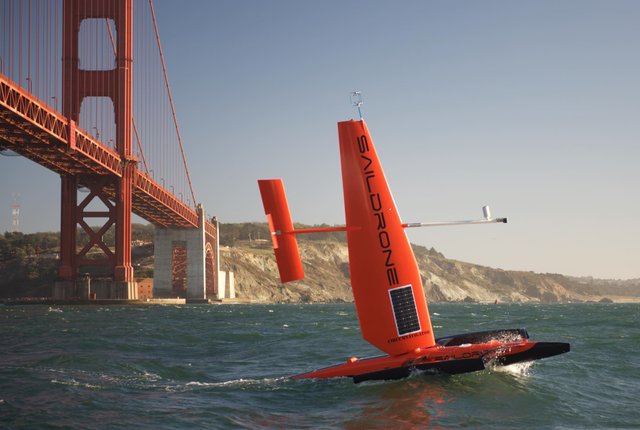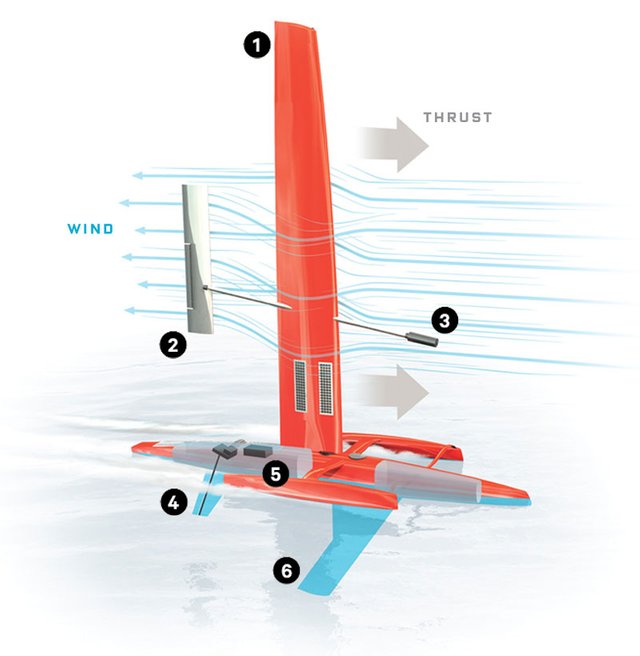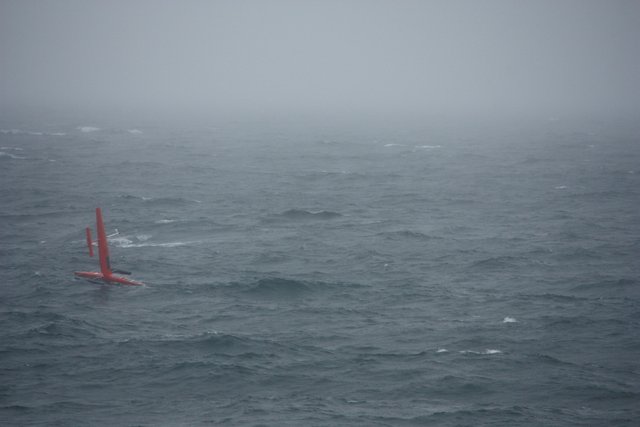Future Technologies: Self-Driving (Sailing?) Boats
The Idea
Everybody and their mother (maybe even grandmother) has heard about self-driving cars, their potential applications, the tests being run around the world etc. Big names like Google, Apple, and Tesla are known to be actively working on commercial development of these projects. But what about self-sailing boats?

Saildrone is a small company running out of a warehouse on a former Navy base in Alameda, California. Their idea? Completely autonomous sailboats. Founded by Richard Jenkins, the CEO, the Saildrone concept is a unique one because it is not based in traditional sailing concepts. Instead, Jenkins' concept comes from his decade long efforts to beat the land-sailing speed world record (which he now holds at 126 MPH.) (Source)

His boats do not have traditional sails, but a rather a carbon fiber "sail" that is really more like a wing. Stabilized by a counterweight placed in front of the sail and a tab trailing behind it that automatically corrects the direction of the sail according to the direction of the wind, the boat is highly efficient and completely sailor-less. All operations are controlled by a communications satellite and GPS system. (Source)

"1. The Wing As wind passes over it, the wing produces thrust. That force is concentrated on its axis of rotation, preventing the wing from spinning wildly.
2. The Tail A little tab at the back of the tail can be set to the left or right, causing the wing to rotate a few degrees and maintain an efficient angle of attack.
3. The Counterweight Positioned at the end of a spar, it adjusts the wing’s equilibrium so its center of gravity is balanced, allowing it to rotate as needed.
4. The Rudder While in theory it’s possible to operate Saildrone by using only the sail, it’s more efficient to use a rudder to point the boat where you want it to go.
5. The Autopilot GPS provides speed data and location. That’s all Saildrone needs to know. Navigation instructions reach the autopilot via satellite.
6. The Keel If Saildrone gets knocked over, it will right itself because of the keel’s weighting. Its steep angle sheds debris like kelp and lost fishing nets." (Source)
Implications
Having already completed an autonomous sailing trip from San Francisco to Hawaii, and two successful trips as a research vessel in the Bering Sea, things are moving fast. Saildrone prototypes, decked out in the latest oceanographic sensors and data systems, are being hailed by oceanographers, marine biologists, and other scientists. As Jenkins put it,
"The scientists tell us Saildrone is a potential game changer for ocean science. The only doubters were those who didn’t believe it could survive for long durations at sea, but...we’ve proved that now."(Source)

The Saildrone's ability to enter highly punishing waters year round, at a substantially lower cost than manned trips, is what makes the developments so exciting. Mr. Jenkins' dream is to see a large fleet of his autonomous sailboats gliding across the oceans of the world year-round. With constant data collection, Saildrone can revolutionize the way we analyze weather, global systems, and climate change. As one of Saildrones' latest investors, Dipender Saluja of the Capricorn Investment Group, puts it
"Saildrone is democratizing access to the oceans, which remain largely unexplored, and is poised to revolutionize the industry, much like SpaceX and Planet Labs have revolutionized the space industry." (Source)
Conclusion
Autonomous sailing drones could allow humanity to, as the famous title sequence of Star Trek puts it, "boldly go where no man has gone before." And if Saildrone has its way, these drones will go and accomplish their goals where no man will ever have to go again.

Sources
- http://www.nytimes.com/2016/09/05/technology/no-sailors-needed-robot-sailboats-scour-the-oceans-for-data.html?_r=0
- http://www.prnewswire.com/news-releases/saildrone-inc-raises-14-million-in-series-a-funding-to-expand-its-fleet-of-sailing-drones-and-ocean-data-services-300322444.html
- http://www.pmel.noaa.gov/itae/follow-saildrone-2016
- http://research.noaa.gov/News/NewsArchive/LatestNews/TabId/684/artmid/1768/articleid/11220/Sailing-for-scientific-success-in-the-Bering-Sea.aspx
- https://www.wired.com/2014/02/saildrone/
- http://mstfoundation.org/story/Saildrone2
- http://saildrone.com/
Great idea!
Awesome post!
But, the star trek quite is much better in Star Trek:the next generation. " To boldly go where no one has gone before"
It can seem like a small thing,but we are talking about half of the human population who does not seem to be included in your version.
Thanks! And very true. I think they meant it in the generalized sense of "man" as in "humanity"...but it could absolutely be misinterpreted.
wow..it makes sense, thanks for sharing your interest.
"Autonomous sailing drones could allow humanity to, as the famous title sequence of Star Trek puts it, "boldly go where no man has gone before." And if Saildrone has its way, these drones will go and accomplish their goals where no man will ever have to go again."
LOL you are too much.
I suppose being unmanned and 'unsinkable' it doesn't matter that the sail 'wing' can't be reefed. Wonder how they'd do in a storm?